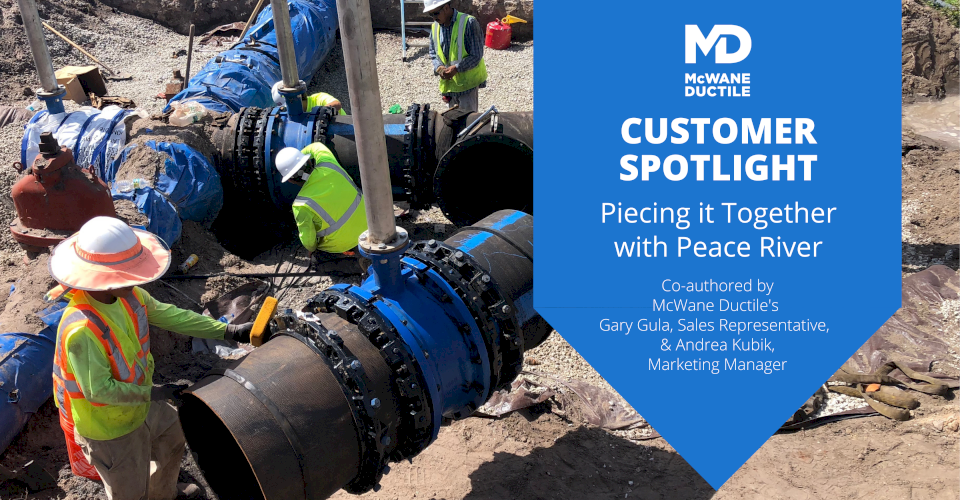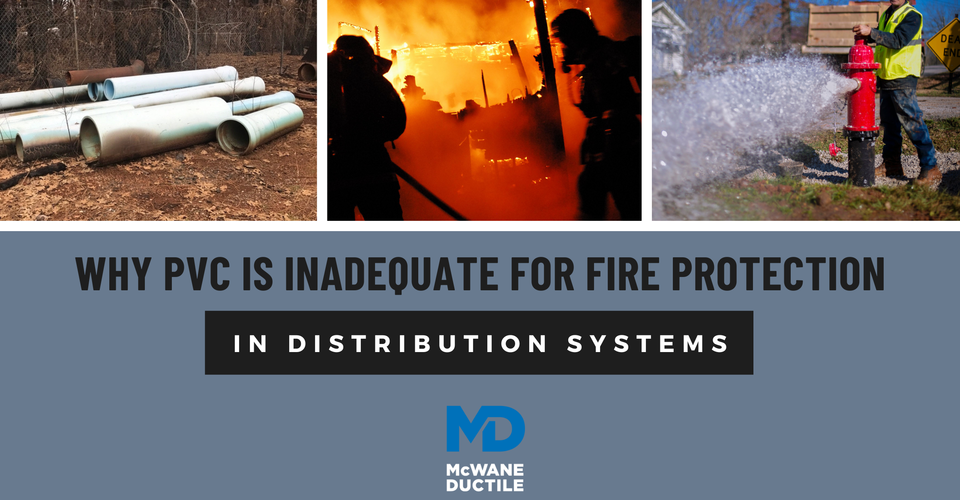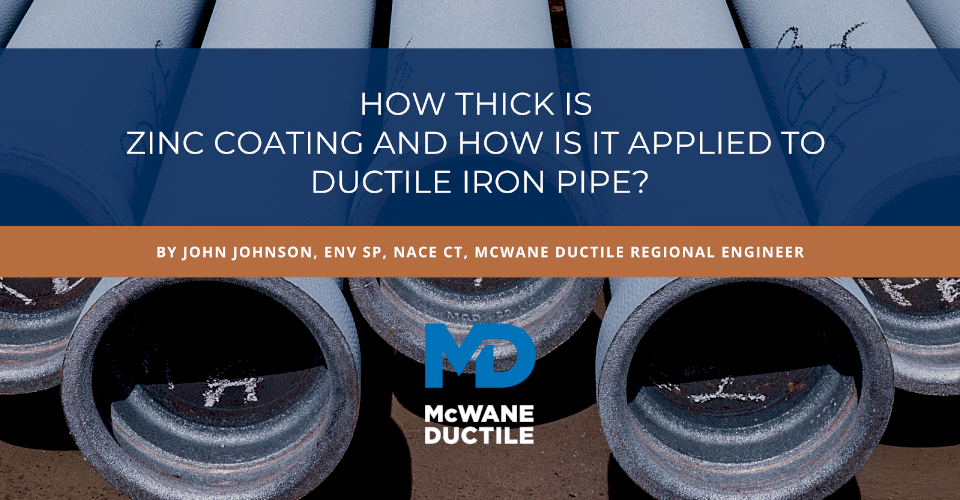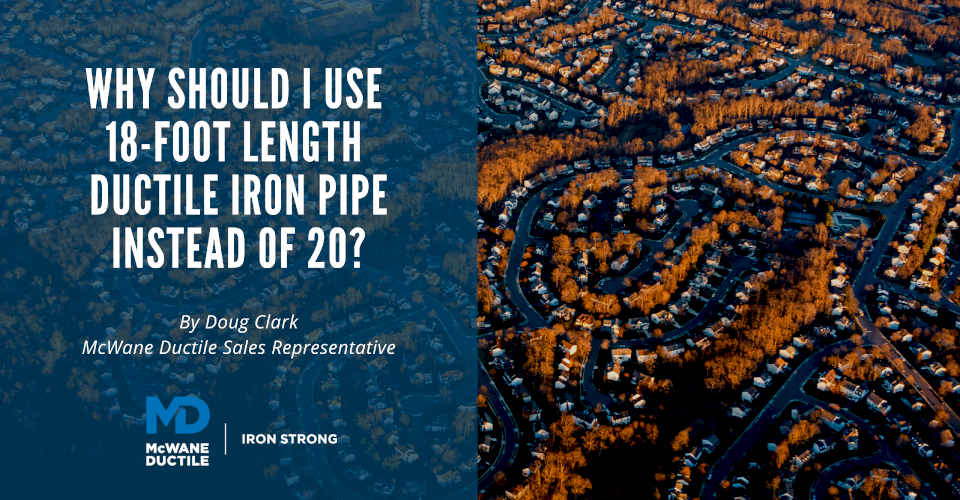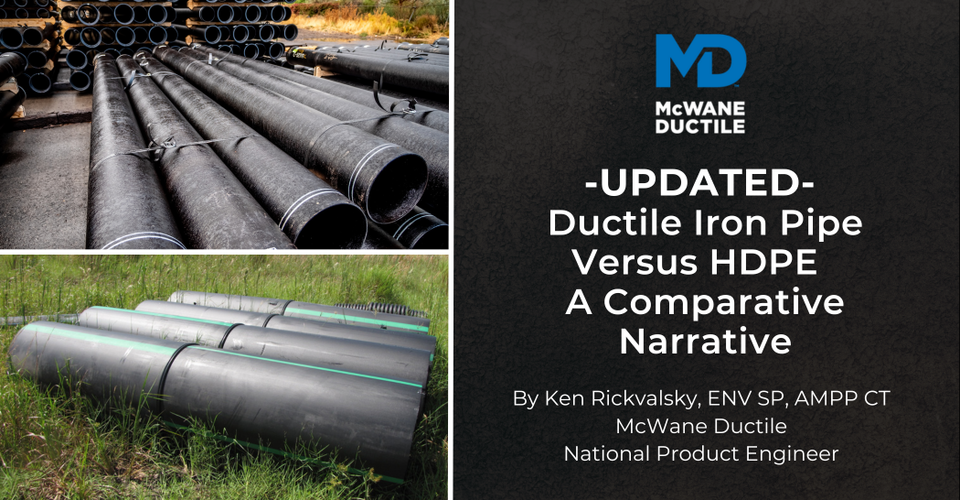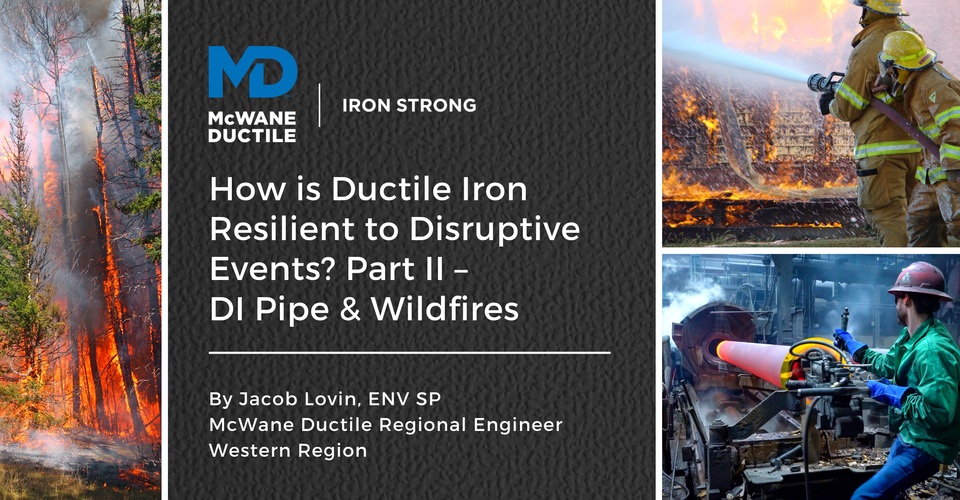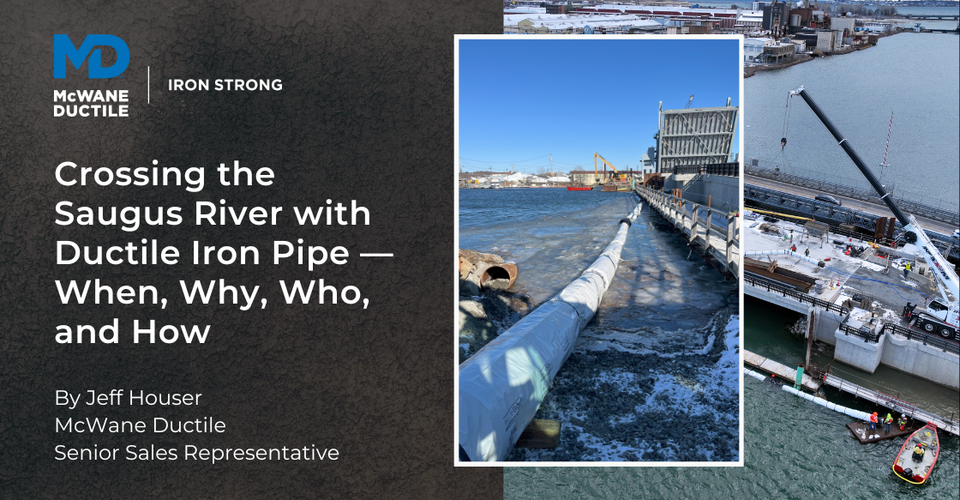-
Why Should I Use Pipe Lubricant Supplied by the Pipe Manufacturer?
11/20/2020 In Installation ProductsFirst, let us establish that all Ductile iron pipe, whether using push-on joints such as Tyton Joint® and TR Flex® Restrained Joints or Mechanical Joint pipe requires the gasket to be properly lubricated prior to joint assembly. Secondly, there is no such thing as too much lube when appropriately applied, especially when using McWane Sure Stop Restraining Gaskets. In this Iron Strong Blog, we will focus on why it is recommended to use the lubricant supplied by the pipe manufacturer.
-
CUSTOMER SPOTLIGHT: Piecing it Together with Peace River
11/13/2020 In Installation Our Company ProductsPeace River Manasota Regional Water Supply Authority has been in operation since 1991 and provides drinking water to more than 900,000 people throughout Charlotte, Desoto, Manatee, and Sarasota Counties in Florida. The Integrated Loop System Phase 1 Interconnect Project was bid in late 2018 and began in early 2019.
-
Ask The Ditch Doctor - Seeing Eye to Eye with The Inspector's Camera
11/06/2020 In Installation TechnicalDear Ditch Doctor,
The county engineer is requesting that we dig up and replace sections of a newly installed Ductile iron pipeline as a result of comments or notations made by an internal video inspection camera operator. I've looked over the “issues” he's noted and can't for the life of me make out what he's talking about.
-
Why PVC is Inadequate for Fire Protection in Distribution Systems
10/31/2020 In Environmental & Safety product TechnicalToday, most water systems serve the public in two ways: by providing potable drinking water and enabling fire protection for the community. Fire protection provides more than just the obvious public safety benefits. It also enhances community property values and provides residents with lower home and property insurance rates.
-
How to Design the Thickness of Ductile Iron Pipe in One Click
10/23/2020 In Installation TechnicalEngineers are busy. They are faced with making critical calculations every day, especially regarding water and wastewater infrastructure. In this article, we will discuss five ways to design the thickness of Ductile iron pipe (DI pipe). Three of them are extremely quick and easy, the other two…maybe not so much
-
How Do I Ensure I Have the Proper Size Casing Pipe for My Ductile Iron Carrier Pipe & What Else Might I Need to Know?
10/16/2020 In Installation TechnicalMost people commonly think the answer to this question is relatively simple. “All I need to do is make sure the Inside Diameter of the casing pipe is larger than the outside diameter of my carrier pipe.” While that is a correct answer, it isn’t necessarily the best answer. Within this Iron Strong Blog, we will closely examine what you need to consider when selecting a casing pipe to fit your application.
-
Can I Paint Over The Exterior Seal Coat On Ductile Iron Pipe?
10/09/2020 In Installation TechnicalA question that comes up occasionally is, "Can I paint over the seal coat on Ductile iron pipe? Perhaps the more pertinent question is, "Should I paint over the outside shop coat? But before we answer either of those questions, we should ask for what purpose the user wants to paint over the seal coat in the first place. Is it for cosmetic purposes? Would it be intended as an identifying mark on the pipe? Or do they have some other purpose for changing or adding to the otherwise standard black asphaltic coating that the manufacturer typically provides?
-
Can a Sure Stop 350® Restrained Joint Gasket Be Used for Horizontal Directional Drilling?
10/01/2020 In Installation Products TechnicalThose involved in the construction of water and wastewater pipelines are probably aware of the installation methodology of Horizontal Directional Drilling (HDD). HDD is a trenchless technique that provides an installation alternative offering several benefits over traditional open-cut. HDD can be implemented with minimal disruption to surface activities, requires less working space, and can be performed more quickly than open-cut methods. HDD can be used to install new pipelines or replace existing ones. Also, it can simplify or eliminate certain permitting processes. Although there are currently no national standards regarding HDD installations of municipal underground infrastructure systems, HDD has seen a dramatic increase in recent years and is becoming more common for any pipe material. HDD may be the fastest-growing trenchless construction method today.
-
How Thick Is Zinc Coating and How Is It Applied to Ductile Iron Pipe?
09/25/2020 In Installation Products TechnicalEver wonder why zinc (Zn) is used for corrosion protection on Ductile iron pipe (DI pipe)? Or how thick the zinc coating is and how it is applied? Today we will answer those questions and cover when a zinc coating might be recommended.
-
Why Should I Use 18-foot Length Ductile Iron Pipe Instead of 20?
09/18/2020 In Installation Products TechnicalGood Question! Today's Iron Strong Blog answers it. At first glance, you might think longer lengths mean fewer joints, and that has got to be better. So why don't all manufacturers make longer pipe? This perceived advantage is really a myth and we will look at that in a minute. In fact, there are more Ductile iron pipe plants in North America that manufacture 18-foot length pipe either entirely or as a significant portion of their product mix.
Latest Posts
- UPDATED - Ductile Iron Pipe Versus HDPE - A Comparative Narrative 05/29/2025 In Comparisons Products Technical
- How is Ductile Iron Resilient to Disruptive Events? Part II – DI Pipe & Wildfires 04/22/2025 In Products Resiliency Technical
- Crossing the Saugus River with Ductile Iron Pipe - When, Why, Who, and How 04/15/2025 In Installation Products Technical
- Why Would High Temperatures Affect Piping Material Selection? 03/25/2025 In Products Technical


